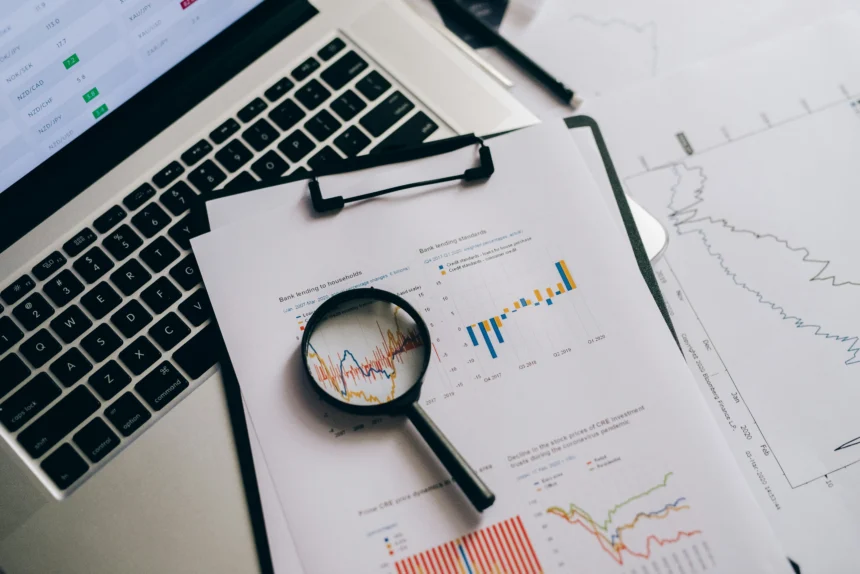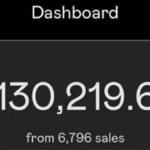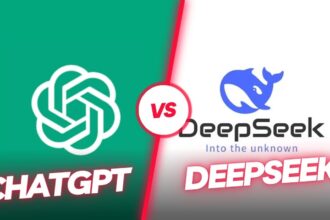In today’s digital world, we generate an astronomical amount of information every single day. From your morning coffee purchase to the route you take to work, everything creates digital footprints. But have you ever wondered who makes sense of all this information? That’s where data science comes in – a fascinating field that transforms raw numbers into actionable insights that drive business decisions and solve real-world problems.
Understanding what data science is has become crucial for professionals across industries, students planning their careers, and business leaders looking to stay competitive. Whether you’re completely new to the concept or seeking to deepen your knowledge, this comprehensive guide will walk you through everything you need to know about data science, its applications, and why it’s considered one of the most promising career paths of the 21st century.
Understanding Data Science: The Foundation
At its core, data science is an interdisciplinary field that combines scientific methods, processes, algorithms, and systems to extract knowledge and insights from structured and unstructured data. Think of it as detective work for the digital age – data scientists examine clues hidden in massive datasets to solve mysteries and predict future trends.
Data science brings together several academic disciplines including statistics, mathematics, computer science, and domain expertise. This multidisciplinary approach allows data scientists to tackle complex problems that require both technical skills and business acumen.
The field has evolved significantly since the term was first coined in the 1960s. What started as simple statistical analysis has transformed into a sophisticated discipline that leverages advanced algorithms, machine learning, and artificial intelligence to process information at unprecedented scales.
The Core Components of Data Science
Statistics and Mathematics
Statistics forms the backbone of data science. Data scientists use statistical methods to:
- Analyze patterns and relationships in datasets
- Test hypotheses and validate findings
- Measure uncertainty and confidence in predictions
- Design experiments and interpret results
Mathematical concepts like linear algebra, calculus, and probability theory provide the theoretical foundation for advanced algorithms and machine learning models.
Programming and Computer Science
Modern data science relies heavily on programming languages and computational tools. Python and R are the most popular languages, chosen for their extensive libraries and ease of use for statistical analysis and machine learning.
Key programming concepts include:
- Data manipulation and cleaning
- Algorithm implementation
- Database management
- Software development best practices
Domain Expertise
Technical skills alone aren’t enough. Successful data scientists must understand the business context and industry they’re working in. This domain knowledge helps them:
- Ask the right questions
- Interpret results meaningfully
- Communicate findings to stakeholders
- Ensure solutions address real business needs
Data Visualization and Communication
The ability to present complex findings in understandable ways is crucial. Data scientists create compelling visualizations and reports that help decision-makers grasp insights quickly and act on recommendations.
The Data Science Process: From Raw Data to Actionable Insights
Understanding what data science is requires knowing how practitioners approach problems systematically. The typical data science workflow includes several key phases:
Data Collection and Acquisition
Every project begins with gathering relevant information from various sources. This might include:
- Internal company databases
- Public datasets and APIs
- Web scraping and social media data
- Survey responses and customer feedback
- Sensor data from IoT devices
Data Cleaning and Preprocessing
Raw data is rarely ready for analysis. Data scientists spend significant time cleaning and preparing datasets by:
- Removing duplicates and errors
- Handling missing values
- Standardizing formats and units
- Creating new variables from existing ones
- Ensuring data quality and consistency
Exploratory Data Analysis (EDA)
Before building models, data scientists explore datasets to understand patterns, distributions, and relationships. This phase involves:
- Creating summary statistics
- Generating visualizations
- Identifying outliers and anomalies
- Discovering correlations between variables
- Forming hypotheses for further investigation
Model Development and Testing
Based on the problem type and data characteristics, data scientists select appropriate algorithms and build predictive models. This process includes:
- Choosing suitable machine learning techniques
- Training models on historical data
- Validating performance using test datasets
- Fine-tuning parameters for optimal results
- Comparing different approaches
Deployment and Monitoring
Successful models must be implemented in production environments where they can generate value. This final phase involves:
- Integrating models into existing systems
- Creating user interfaces and dashboards
- Monitoring model performance over time
- Updating models as new data becomes available
- Measuring business impact and ROI
Real-World Applications of Data Science
To truly grasp what data science is, it’s helpful to see how organizations apply these techniques across different industries:
Healthcare and Medicine
Medical institutions use data science to:
- Predict disease outbreaks and epidemics
- Develop personalized treatment plans
- Analyze medical imaging for diagnosis
- Optimize hospital operations and resource allocation
- Accelerate drug discovery processes
For example, during the COVID-19 pandemic, data scientists played crucial roles in tracking virus spread, predicting hospital capacity needs, and analyzing vaccine effectiveness.
Financial Services
Banks and financial institutions leverage data science for:
- Fraud detection and prevention
- Credit risk assessment
- Algorithmic trading strategies
- Customer segmentation and targeting
- Regulatory compliance monitoring
Credit card companies use sophisticated algorithms to identify suspicious transactions in real-time, protecting both customers and financial institutions from fraudulent activities.
Retail and E-commerce
Online retailers apply data science to enhance customer experiences through:
- Personalized product recommendations
- Dynamic pricing optimization
- Inventory management and demand forecasting
- Customer lifetime value prediction
- Market basket analysis
Amazon’s recommendation system, which suggests products based on browsing and purchase history, is a prime example of data science driving business growth.
Transportation and Logistics
Companies in this sector use data analytics for:
- Route optimization and traffic management
- Predictive maintenance of vehicles and equipment
- Autonomous vehicle development
- Supply chain optimization
- Demand forecasting for ride-sharing services
Uber and Lyft use complex algorithms to match drivers with passengers, optimize routes, and implement surge pricing based on real-time demand patterns.
Career Paths in Data Science
Understanding what data science is also means exploring the diverse career opportunities within the field. The data science ecosystem includes several specialized roles:
Data Scientist
The classic data scientist role involves end-to-end project ownership, from problem definition to solution deployment. These professionals typically have strong backgrounds in statistics, programming, and business analysis.
Data Analyst
Data analysts focus on descriptive analytics, creating reports and dashboards that help organizations understand past performance and current trends. This role often serves as an entry point into the data science field.
Machine Learning Engineer
These specialists focus on building and deploying machine learning models at scale. They bridge the gap between data science research and production systems, ensuring models perform reliably in real-world environments.
Data Engineer
Data engineers build and maintain the infrastructure that data scientists need to do their work. They design databases, data pipelines, and processing systems that handle large-scale data operations.
Research Scientist
In academic and research settings, data scientists work on advancing the field through new methodologies, algorithms, and theoretical contributions. These roles often require advanced degrees and deep technical expertise.
Essential Skills for Data Science Success
Whether you’re considering a career transition or looking to enhance your current skill set, understanding what data science requires can help you develop the right capabilities:
Technical Skills
- Programming Languages: Python, R, SQL, and sometimes Java or Scala
- Statistical Analysis: Hypothesis testing, regression analysis, time series analysis
- Machine Learning: Supervised and unsupervised learning algorithms
- Data Visualization: Tools like Tableau, Power BI, or programming libraries
- Database Management: Understanding of relational and NoSQL databases
- Cloud Platforms: Experience with AWS, Google Cloud, or Azure
Soft Skills
- Critical Thinking: Ability to approach problems systematically and question assumptions
- Communication: Skill in explaining complex concepts to non-technical stakeholders
- Business Acumen: Understanding of organizational goals and industry dynamics
- Project Management: Capability to manage timelines, resources, and deliverables
- Continuous Learning: Willingness to adapt to new technologies and methodologies
Tools and Technologies in Data Science
The data science toolkit has expanded dramatically in recent years. Here are some essential tools that professionals use regularly:
Programming Languages and Frameworks
- Python: With libraries like pandas, scikit-learn, and TensorFlow
- R: Particularly strong for statistical analysis and visualization
- SQL: Essential for database querying and data manipulation
- Spark: For big data processing and distributed computing
Visualization Tools
- Tableau: Popular commercial visualization platform
- Power BI: Microsoft’s business intelligence solution
- matplotlib/seaborn: Python libraries for creating custom visualizations
- ggplot2: R’s powerful visualization package
Machine Learning Platforms
- TensorFlow: Google’s open-source machine learning framework
- PyTorch: Facebook’s deep learning library
- scikit-learn: Python’s general-purpose machine learning library
- MLflow: Platform for managing machine learning lifecycles
Cloud Services
- Amazon Web Services (AWS): Comprehensive cloud computing platform
- Google Cloud Platform (GCP): Strong in AI and machine learning services
- Microsoft Azure: Enterprise-focused cloud solutions
- Databricks: Unified analytics platform for big data and machine learning
Challenges and Limitations in Data Science
While data science offers tremendous opportunities, it’s important to understand the challenges practitioners face:
Data Quality Issues
Poor quality data can lead to inaccurate insights and flawed decisions. Common problems include:
- Incomplete or missing information
- Inconsistent data formats
- Biased or unrepresentative samples
- Outdated or irrelevant datasets
Technical Complexity
Modern data science projects often involve:
- Large-scale distributed computing
- Complex algorithmic implementations
- Integration with existing systems
- Performance optimization challenges
Ethical Considerations
Data scientists must navigate important ethical questions about:
- Privacy and data protection
- Algorithmic bias and fairness
- Transparency and explainability
- Societal impact of automated decisions
Business Alignment
Success requires close collaboration between technical teams and business stakeholders to ensure:
- Projects address real business needs
- Results are actionable and implementable
- ROI meets organizational expectations
- Communication is clear and effective
The Future of Data Science
As we look ahead, several trends will shape what data science becomes:
Artificial Intelligence Integration
The line between data science and AI continues to blur as:
- Machine learning becomes more accessible
- Automated model building tools emerge
- AI assists with data preparation and analysis
- Deep learning applications expand
Edge Computing and IoT
The proliferation of smart devices creates new opportunities for:
- Real-time data processing
- Distributed analytics
- Sensor data analysis
- Autonomous system development
Democratization of Data Science
Tools and platforms are making data science more accessible through:
- No-code and low-code solutions
- Automated machine learning (AutoML)
- Self-service analytics platforms
- Citizen data scientist initiatives
Ethical AI and Responsible Data Science
Growing awareness of algorithmic impact drives focus on:
- Bias detection and mitigation
- Explainable AI methods
- Privacy-preserving techniques
- Regulatory compliance
Getting Started in Data Science
If you’re inspired to learn more about what data science offers, here’s how to begin your journey:
Educational Foundation
Start with these fundamental areas:
- Statistics and probability
- Programming (Python or R)
- Database concepts and SQL
- Basic machine learning principles
Practical Experience
Build your skills through:
- Online courses and tutorials [link to data science courses page]
- Personal projects with public datasets
- Kaggle competitions and challenges
- Contributing to open-source projects
Building a Portfolio
Showcase your abilities by creating:
- End-to-end project demonstrations
- Clear documentation and explanations
- Visualizations and interactive dashboards
- Code repositories on GitHub
Networking and Community
Connect with the data science community through:
- Professional associations and meetups
- Online forums and social media groups
- Industry conferences and workshops
- Mentorship opportunities
Frequently Asked Questions
What is data science in simple terms?
Data science is the practice of using scientific methods, programming, and statistical techniques to analyze large amounts of information and extract useful insights that help organizations make better decisions. Think of it as using math and computers to find patterns in data that can solve real-world problems.
Do I need a PhD to work in data science?
No, you don’t need a PhD to work in data science. While advanced degrees can be helpful for certain research positions, many successful data scientists have bachelor’s or master’s degrees in relevant fields like statistics, computer science, mathematics, or even unrelated fields with additional training in data science skills.
What is the difference between data science and data analytics?
Data analytics typically focuses on examining past data to understand what happened and why, creating reports and dashboards for decision-making. Data science is broader, encompassing analytics but also including predictive modeling, machine learning, and building systems that can automatically make decisions or recommendations based on data.
How long does it take to become a data scientist?
The timeline varies depending on your background and learning approach. With a relevant degree and focused study, you might be ready for entry-level positions in 6-12 months. For those starting from scratch, expect 1-2 years of dedicated learning to build the necessary skills in programming, statistics, and domain knowledge.
Is data science still a good career choice in 2025?
Yes, data science remains an excellent career choice. The demand for data professionals continues to grow as organizations increasingly rely on data-driven decision-making. The field is evolving, but opportunities exist across industries, from traditional data scientist roles to specialized positions in machine learning engineering, data engineering, and AI research.
What programming language should I learn first for data science?
Python is generally recommended for beginners due to its readable syntax, extensive libraries, and strong community support. It’s versatile enough for data analysis, machine learning, and web development. R is another excellent choice, particularly if you’re more focused on statistics and academic research.
Can I transition to data science from a non-technical background?
Absolutely! Many successful data scientists come from non-technical backgrounds in fields like business, economics, psychology, or biology. The key is developing technical skills while leveraging your domain expertise. Your background knowledge in a particular industry can actually be a significant advantage in understanding business problems and interpreting results.
Conclusion
Understanding what data science is reveals a field that sits at the intersection of technology, statistics, and business strategy. It’s a discipline that transforms raw information into actionable insights, driving innovation across every industry from healthcare to entertainment.
As our world becomes increasingly digital, the ability to extract meaning from data becomes more valuable than ever. Data science isn’t just about complex algorithms or fancy visualizations – it’s about solving real problems that improve people’s lives and help organizations thrive.
Whether you’re considering a career change, looking to enhance your current role, or simply curious about how data shapes our modern world, data science offers endless opportunities for learning and growth. The field continues to evolve rapidly, creating new roles and applications that we’re only beginning to explore.
The journey into data science requires dedication and continuous learning, but the rewards – both personal and professional – make it worthwhile. As you embark on or continue your data science journey, remember that at its heart, data science is about curiosity, critical thinking, and the desire to turn information into understanding.
Start with the basics, build practical experience, and don’t be afraid to tackle real-world problems. The data is out there waiting to tell its story – and with the right skills and mindset, you can be the one to uncover its secrets.









